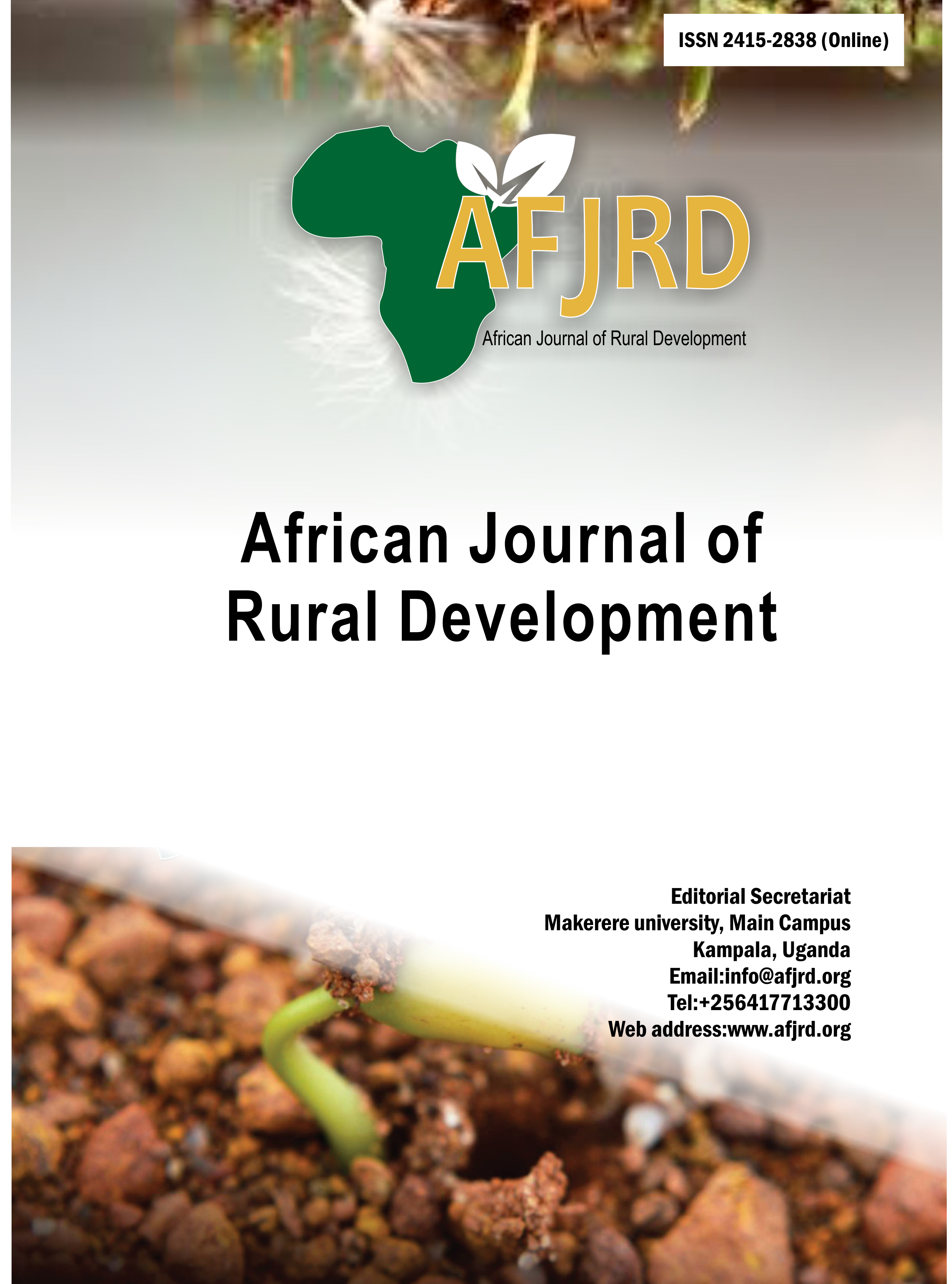Gastrointestinal parasites of Angora goats in Lesotho: Prevalence and abundance
Main Article Content
Abstract
Angora goat farming is of economic importance in Lesotho as these goats provide cash from
the mohair export sales, sales of animals for use in cultural ceremonies and as source of meat.
Their production is however constrained by diseases including those caused by gastrointestinal
parasites (GIPs). Therefore, this study was conducted to determine whether prevalence and
abundance of GIPs of Angora goats are influenced by the district, agro-ecological zone,
goat age and sex. Information on GIP prevalence and abundance was collected through a
longitudinal study from which 1,795 goat faecal samples were collected from the two districts
(Maseru and Quthing) categorized by agro-ecology, age and sex. Nematodes and coccidians
were the most prevalent species of parasites, with 79% and 52% of the goats respectively
harbouring these GIPs in Maseru and 74% and 36% in Quthing, respectively. Prevalence
of these GIPs differed significantly (P<0.05) among the agro-ecological zones within each
district. Different ages of goats did not differ significantly (P>0.05) in nematode prevalence
whereas they differed significantly in coccidian prevalence. Male and female goats did not
differ in their prevalence and abundance of both nematodes and coccidia. Nematodes were
highly prevalent in October but faecal egg counts (FEC) were more in November. Coccidian
prevalence and oocyst accumulation were high in winter (July) but dropped drastically
thereafter. Therefore, it is important to take into consideration agro-ecological zone, age and
month of the year when designing an integrated GIP control programme for Angora goats in
Lesotho.
Article Details

This work is licensed under a Creative Commons Attribution 4.0 International License.
